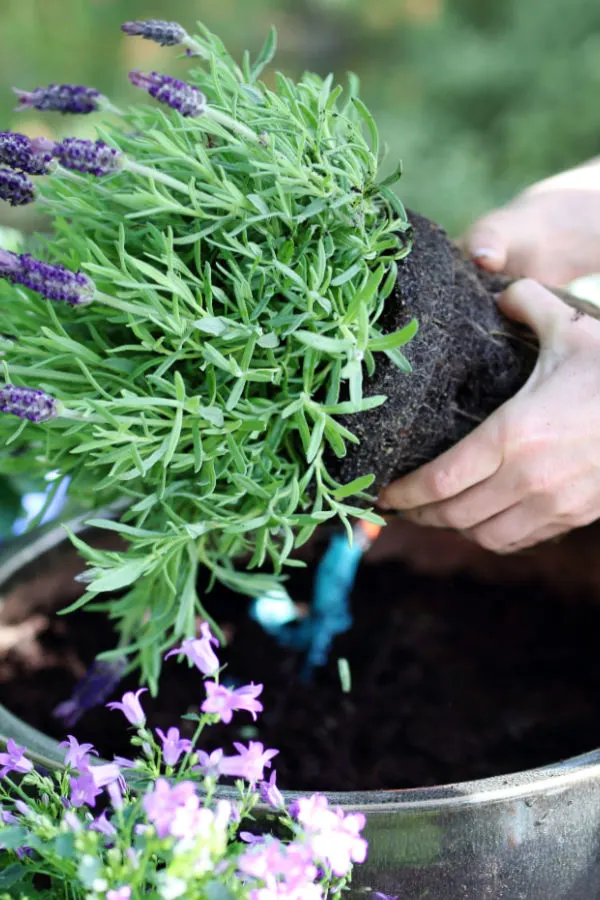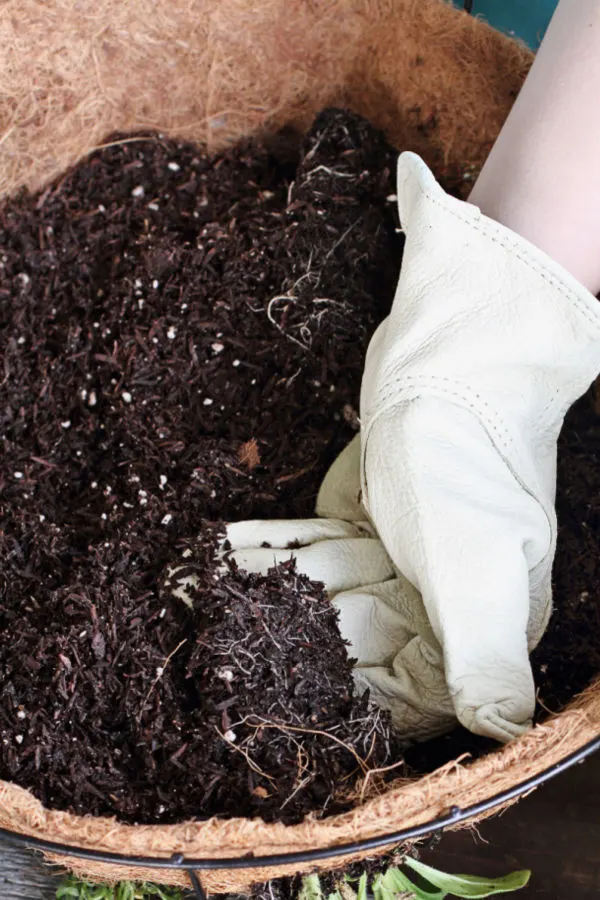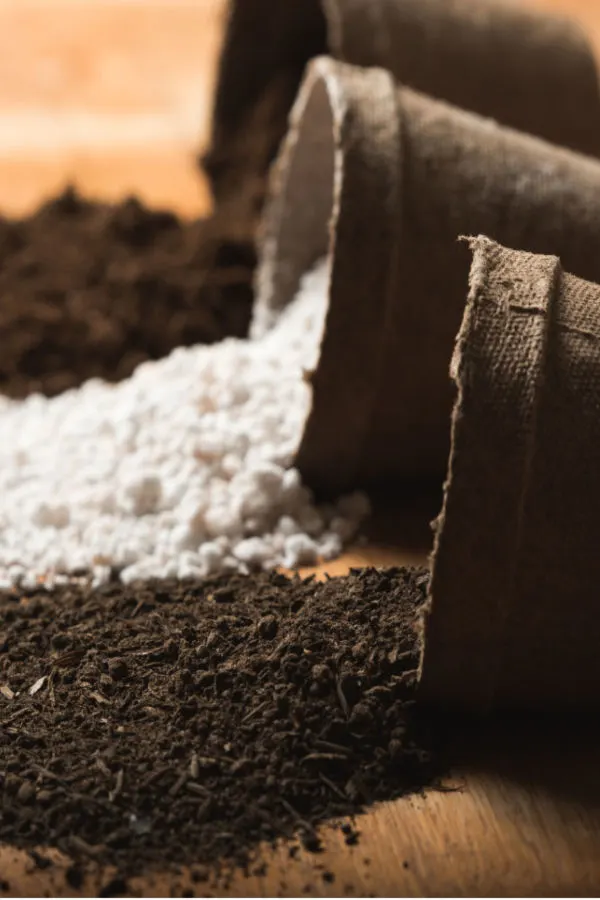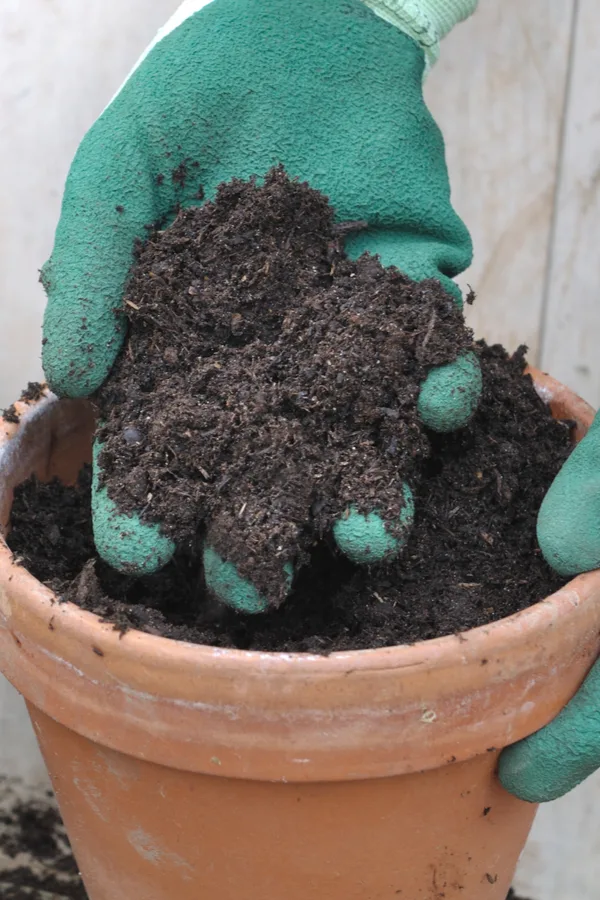Wondering if you can recycle, recharge and reuse your old potting soil for a second season?
Potting soil can be one of the biggest annual expenses of all for those who like to plant flowers and vegetables in pots, containers and hanging baskets. In fact, quite often, it can cost a gardener more for the soil filling their containers than the plants being potted in it!
Like everything else in recent years, the price of potting soil is soaring. Large, 40+ quart bags of potting soil can now easily top $15 to $20 or more. And even if you make your own at home, it can still cost a pretty penny for the must-have ingredients that make up quality soil.

But here is the good news – you can indeed recharge and reuse potting soil! And even better, it’s easy to do! Not only can it help you save big on your garden budget, with just a few simple steps, you can create amazing soil that can be just as productive as when you first purchased it – or maybe even better!
With that in mind, here is a look at a couple of easy ways to recycle your old potting soil to make it strong, healthy and fertile once again. As always, you can also listen to our podcast on the topic below, or read on for our full length article.
How To Recharge & Reuse Old Potting Soil
Why You Need To Recharge Potting Soil
Although the soil in your old pots and hanging baskets might still look okay on the surface, if you were to simply replant new flowers or vegetables into it, the results would most likely be quite disappointing.
Annuals, vegetable plants, herbs and perennials require a lot of nutrients to grow. And over time, those nutrients are depleted from the soil, leaving it lifeless in the process. Without rebuilding the energy, new plants can’t find the minerals and nutrients they need to flourish.
This is especially true when it comes to big flowering annuals and vegetable plants. When growing in pots, they require an enormous amount of energy to produce all of their blooms or fruit. And after just one season, the soil in pots has all but lost that energy.
How To Recycle, Recharge & Reuse Your Potting Soil – LISTEN IN BELOW TO OUR PODCAST ON TODAY’S ARTICLE!
But in addition to losing its nutrient levels, the soil structure itself breaks down. After a full season of growing plants, the soil is loose and dry. Because of that, it simply can’t hold in nutrients or even moisture.
Finally, as that soil continues to break down and lose nutrients, it also becomes more prone to disease. Mold, mildew and a host of other issues can easily begin to appear in the soil. Of course, when they do, they can also infect and harm any plants that grow in it.
2 Great Ways To Recycle, Recharge & Reuse Old Potting Soil
So now that we have covered why you have to recharge old potting soil to use it again successfully – just how do you go about doing it?
There are actually two unique methods for recharging soil. One works well for those who clean out their containers and baskets in the fall before winter arrives. The second, meanwhile, is more of a quick charging method for those who might not have got around to emptying their pots in the fall – and need to use the soil again in the spring!
Both methods work well to recharge the soil but require a little different approach. We will start by covering the spring recharging method first.
How To Recycle, Recharge & Reuse Old Potting Soil In The Spring
So we have all been there. You had the best intentions of cleaning out the flowers or vegetables from your pots in late fall, but just never quite got around to it. Or maybe you at least took out the plants, but the soil is still in the baskets or containers.

Sometimes life gets in the way, but if this is your situation – no worries. You can still power up that old soil, and use it for powering your plants once again this year in short order!
Since this is a quick recharge method, it will require a few ingredients to bring your old soil back to life – mainly compost, worm castings and a bit of perlite.
- Compost – finely shredded or screened compost works best
- Worm Castings – make sure you have 100% castings, not a filler product
- Perlite – 100% organic soil lightener, made from volcanic glass
All three of the above can usually be found in local greenhouses, nurseries, big box stores or online. (We have links at the end of the article)
Spring Recharging
To reuse old potting soil in the spring start by placing all of your old soil in a single pile. If you have just a few pots, a wheelbarrow will work great for this. If you have have more, a tarp on the ground works wonders. Be sure to remove all of the old plants and roots from the soil before creating your soil pile.
To the pile, you will be adding each of the three new ingredients. Start by adding compost. However big your pile of old soil, add about 1/3rd additional compost to it. Compost recharges and adds incredible structure the soil. The finer the compost is, the better for potting soil.
Next, add in the worms castings. As for how much to add, 2 to 3 cups of castings for every 5 gallon bucket of old potting soil is a good rule of thumb. Like compost, worm castings add incredible energy and power to the soil. Slow and steady power.

Worm castings also helps with absorbing moisture, building back the soil structure that is so vital to plants. Although compost is great on its own – adding the worm castings in with it makes all the difference!
Finally, add in a bit of perlite as well to help loosen and lighten the mix. Perlite is volcanic glass that has been heated and exploded into tiny white pellets. It helps to keep soil from compacting.
Although your existing old potting soil may have some already in it, add a cup or two for every 5 gallon bucket of old soil. This will go a long way in helping your pots to drain well and perform better!
Composting Potting Soil In The Fall To Reuse Again
In the fall, you can actually recharge your soil a bit easier and with on-hand ingredients. This not only saves on the budget, but also gets your pots and landscape ready for winter.
For fall recharging, simply find a small area in your garden, or an extra compost bin to place all of your old soil. Again, remove all plants and roots from your containers, but this time, chop them up and re-add them to the soil pile.
In the fall, there is plenty of time to do this and still have the foliage and roots break down in the pile to give energy back. Next, it’s time to add fall’s bounty of materials to help recharge your pile!
Grass clippings, shredded leaves and shredded plant materials from your flowerbeds are all perfect to add to the old soil pile. Always be sure to shred them finely before adding. A push or lawn mower works great for this.

By shredding all of the materials, they will have time to break down over late fall and winter. This is also a great time to add a few buckets of compost from your compost pile. Fresh compost has all of the microbes and organisms needed to start your new soil pile composting!
Coffee Grounds & Egg Shells
In addition, add coffee grounds and pulverized egg shells to the pile over fall and winter. These two items will break down quickly and re-energize the pile. Be sure to turn your pile at least once a week until it freezes over for winter. Come spring, you will have soil that is revitalized and ready for growing!
Here is to reusing old potting soil – and to saving big on your gardening budget in the process!
Additional Article Links
How To Use Worm Castings To Power Plants – The 100% Natural Fertilizer That Works
Using Perlite To Create Better Soil & Grow Healthier Plants!
How To Make The Best Potting Soil Mix Around – Without Peat Moss
Affiliate Product Links
Bagged Perlite – Bliss Horticultural Perlite
Follow Our Facebook Page For Even More Great Tips! Simple Garden Life Facebook Page
Simple Garden Life is a website dedicated to keeping gardening fun, simple and enjoyable! We publish two new articles each week along with a new garden podcast episode every two weeks. This article may contain affiliate links.
